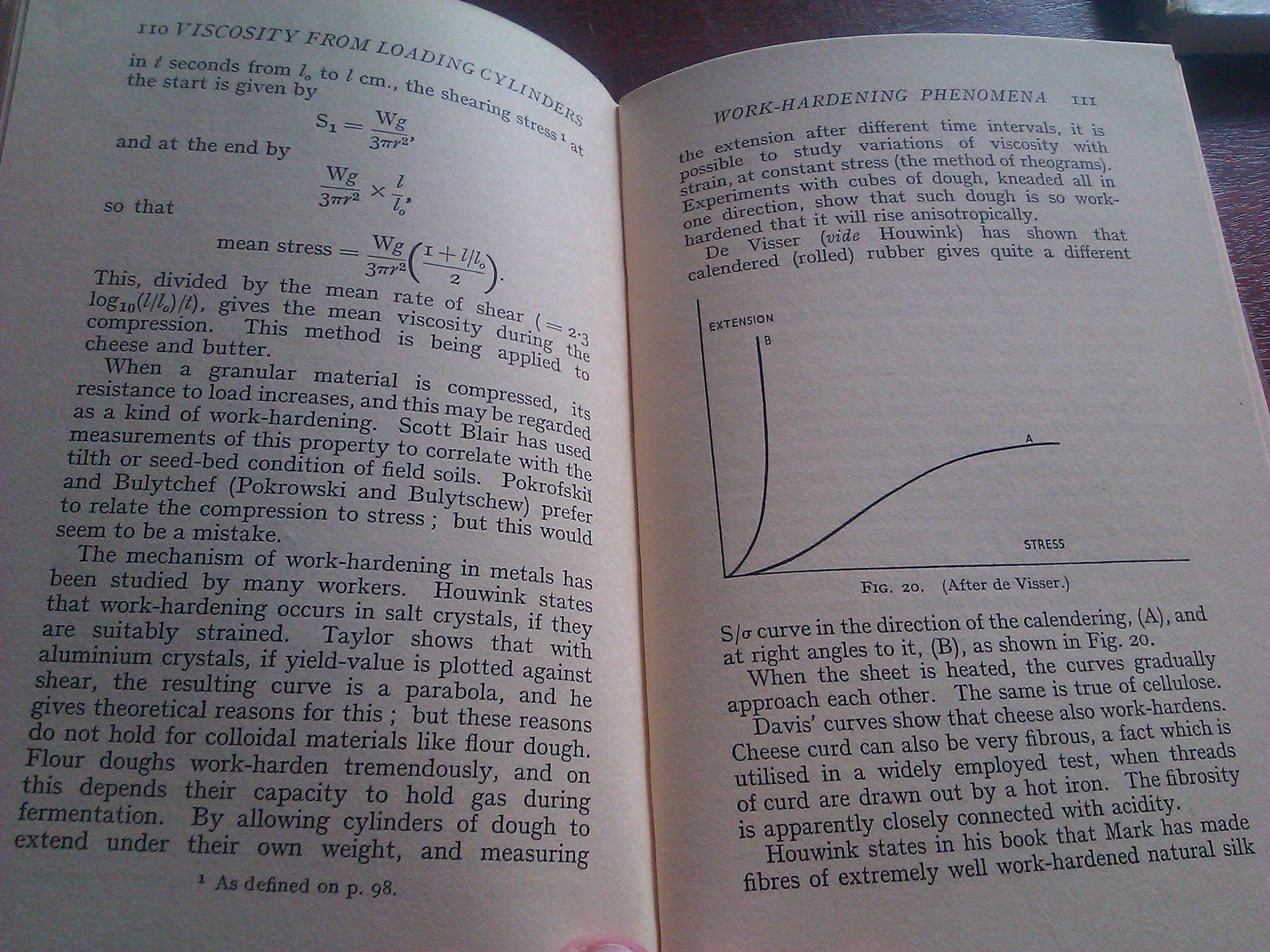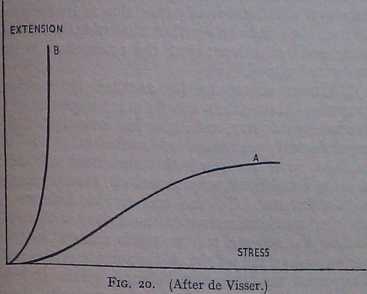84944 str (84)

CVi
no YISCOSITY F LOAt>mG
m t
r^ssi
W*
lip
seconds from l„ to l cm., the WHSL the start is given by . strHH
at
W£
3^2
and at the end by
so that
II
1
mean stress =
3nrz\ m
This, divided by the mean ratę of shear Ł( = 2. logio(*/W)> gives H mean Yiscosity durin^th3e compression. This method is being applied to cheeśe and butter.
When a granular materiał is ęompressed, its resistance to load increases, and this mayłś regarded as a kind of work-hardening. Scott Blair has used measurements of this property ta.correlate with the tilth or seed-bed condition of field soils. Ifepkrofskił and Bulytchef (Pokrowski and Bulytschew) prefer to relate the compression to stress ; but this would seem to be a mistake.
The mechanism of work-hardening iri metals has been studied by many workers. Houwink states that work-hardening occurs in salt crystals, ifghey are suitably strained. Taylor shows that with aluminium crystals, if yieldrvalue is plottedidgainst shear, the resulting curve is a parabola, and he gives theoretical reasons for this ; but these reasons do not hołd for colloidal materials like flour dough. Flour doughs work-harden tremendously, and on this depends their capacity to hołd gas during fermentation. By allowing cylinders of dough to extend under their own weight, and ńieasuring 1 Aa defined on p. 98.
tbe extension after different time intervals, it is possible to study variations of yiscosity with strain, at constant stress (the method of rheograms). gxperiments with cubes of dough, kneaded all in one direction, show that such dough is so work-bardened that it will rise anisotropically.
De Visser (uide Houwink) has shown that ealendered (rolled) rubber gives quite a different

S/ff curve in the direction of the calendering, (A), and at right angles to it,.(B); as shown in Fig, 30.
: When the sheet is heated, the curves gradually approach each other. The same is true of cellulosev Davis’ curves show that cheese also work-hardens. Cheese curd can also be very fibrous, a fact whichis utilised in a widely employed test, when threads of curd are drawn out by a hot iron. The fibrosity is apparently closely connected with acidity., Houwink states in his book that Mark has madę fibres of extremely well work-hardened natural silk
Wyszukiwarka
Podobne podstrony:
testy, zielone str 84 23. Które z rówanań ilustruje otrzymywanie mydła? A 2 HCOOH + Mg-» (HCOO)2Mg +
nhtnych objętości roztworów 0,3% MgCl;, 0,3% NH,NO, i 0,3% NajPO, Mg* 2C1" NH; no; 3Na* POj&quo
str 84 85 upoważniony przekazać wam już dzisiaj odpowiedni zadatek. Dla poparcia tych argumentów płe
str. 84 C. Mediacje prowadzące do zawarcia ugody w postępowaniu w przedmiocie
20284 str 84 (2) Ciasteczka migdałowe 225 g całych, oparzanych migdałów (ok. ll/2 szklanki) 1 łyżka
84 (133) nO dwór, <?lo mnie, zO mną, także w zaprzeczonych czasownikach jednosylabowych, np. niO
19813 str 84 85 Łomnica
42 (242) str. 84 • ZABÓJCZA KONCENTRACJA - Paweł Sygnowski CZĘŚĆ 4. Ćwiczenie koncentracji ZABÓJCZA
42 (349) str. 84 • TO TAKIE PROSTE - Anna Opala Gwarancja 21. Zaczniesz myśleć samodzielnieGwarancja
str 84 84 Narządy klatki piersiowej Pars ascendons aortae v V. cava superior N Valvula sinus coronar
więcej podobnych podstron